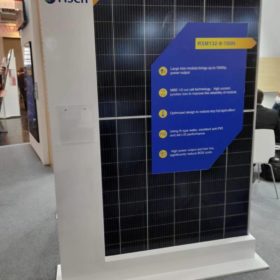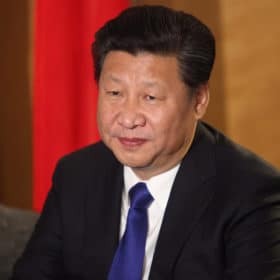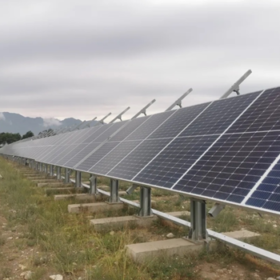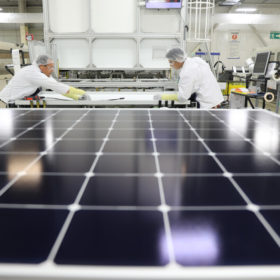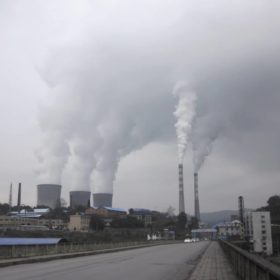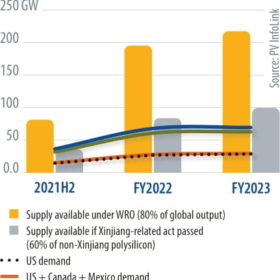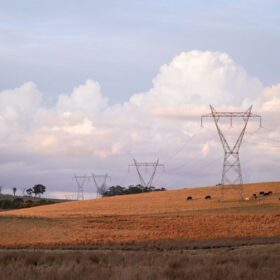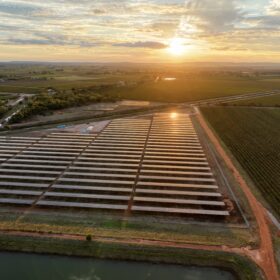Risen showcases n-type solar panel with output of 700 W
The 210 mm module can reach a power output of up to 703.6 W and a power conversion efficiency of 23.08%. The result was confirmed by Germany’s TÜV SÜD.
China plans new polysilicon production, 100 GW of solar for desert areas
China’s president has detailed plans to accelerate the planning and construction of large-scale wind and PV projects in desert areas, while Wuxi Shanghai announced new granular silicon and nano-silicon production capacity expansions.
Saturday read: Chinese U-turn on stranded Australian coal could aid solar imports
China’s coal crunch looks set to see the nation turn to the Australian coal it has kept stranded via its year-long unofficial import ban. The news isn’t great for CO2 emissions, but could ease the significant impacts being felt by the Chinese solar industry.
Comparing new solar module formats
JA Solar published data comparing its own modules, based on the 182mm wafer format, with others utilising the larger 210mm size over a six month period in field testing. The data show that the smaller of the two formats reached an average daily energy yield almost 2% higher. According to JA Solar’s analysis, the higher currents produced by the 210mm modules led to higher resistance, and more energy lost as heat.
Industry veteran warns of looming supply chain disruption
Australia’s module supply landscape could experience a supply shock as legislation looms to stamp out the use of forced labor. Chris O’Brien, Maxeon Solar Technologies VP for the APAC region says that the measures that have left modules stranded at the U.S. border could very well occur in Australia soon.
APsystems reveals dual microinverter it claims to be most world’s most powerful
The 97%-efficient microinverter has a power output of up to 960 VA and APsystems claims it is the most powerful dual microinverter in the world.
China develops tech to detect module faults in all weather and lights
The system combines software that applies a modulated electric current to the PV panels and an indium-gallium-arsenide (InGaAs) photodiode detector that takes a sequence of images of the panels. According to its creators, the proposed technique works with any lighting conditions and in all weather.
China pledges not to build new coal plants abroad yet questions remain
President Xi Jinping’s pledge this week at the United Nations General Assembly that China will not build new coal-fired plants abroad is welcome news; however, Asia’s transition to low carbon energies remains in dire need of policy reforms.
Australia branded a laggard as new report reveals China holds key to cancelling global coal projects
With pressure mounting on the world’s governments to turn their back on the fossil fuel, China and peers in South East Asia, Europe and South Asia could help deliver a coal-free future at the COP26 climate summit planned in Glasgow in November.
Sunday read: looming impacts of international trade disputes on polysilicon
Polysilicon capacity is unable to catch up with rapid capacity expansion in the mid and downstream segments, writes Corrine Lin, chief analyst for PV InfoLink. New polysilicon capacity requires big capex investment and a lead time of more than two years to complete construction and reach full operation. With unbalanced capacity between the upstream and downstream segments, polysilicon prices have been rising since the second half of 2020, with prices for mono-grade polysilicon surpassing CNY 200/kg (US$27.40) in June 2021, up more than 250% year on year.
